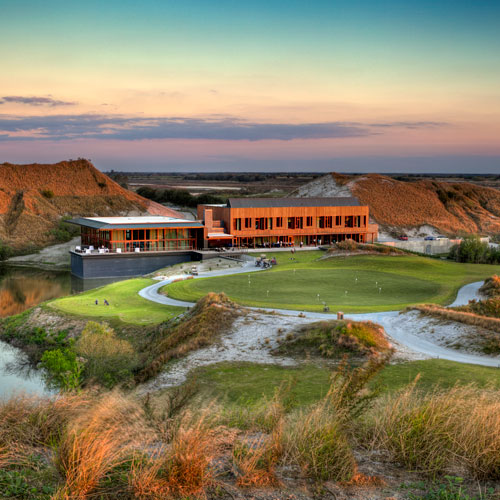Kids of Baltimore may not have known it at the time, but in the final days of Maryland’s 2013 legislative session, their academic paths changed. That’s when lawmakers passed House Bill 860: the Baltimore City Public Schools (BCS) Construction and Revitalization Act of 2013.
The bill authorized the Maryland Stadium Authority (MSA) to issue bonds to finance the construction and renovation of numerous public school buildings laid out in a seven-year plan. Mayor Stephanie Rawlings-Blake saw the program as critical to Baltimore’s revitalization. “A key goal of my administration is to grow Baltimore City by 10,000 families over the next decade, and a strong education system that provides all children with the tools and resources to prepare them for successful futures and schools that strengthen neighborhoods are vital to realizing that plan,” she said in a press release.

As BCS’s director of facilities, design, and construction, Larry Flynn saw the need for renewal firsthand. “We had 163 buildings, and we had charter schools in 19 buildings that we didn’t own,” he says. When the school board hired a management company to evaluate its portfolio between 2010 and 2012, almost every building received a failing grade. “Everyone involved realized that we had to bring these buildings out of their condition and make significant investments for Baltimore’s future,” Flynn says.
School officials approached the legislature with a bond referendum to finance replacements and renovations. A year later, the idea grew into a four-way partnership with three cash providers: BCS, the City of Baltimore, and the State of Maryland. Each year moving forward, each partner will generate $20 million for a comprehensive rehabilitation program now known as the 21st Century Buildings Initiative.
The Maryland Stadium Authority
When the deal called for Maryland’s $20 million to come from the state’s lottery proceeds, legislators knew who to call: Gary McGuigan and Eric Johnson. The two lead the Capital Project Development Group of the MSA, the agency responsible for, among other things, building the MLB’s Oriole Park at Camden Yards and the NFL’s M&T Bank Stadium with lottery funds.
Now senior vice president, McGuigan has been working with the group for nearly 20 years. Johnson joined the agency in 2004 after developing his expertise in various construction-related specialties. Though originally created for sports projects, the MSA expanded its capabilities over time and has completed roughly $1.3 billion worth of work throughout the state. Projects such as the Baltimore and Ocean City Convention Centers, the renovation of the Hippodrome Performing Arts Center, and the Montgomery County Conference Center have earned the MSA a reputation for timely and on-budget delivery of superior work.
Because the authority is a state entity, McGuigan and Johnson don’t search for projects; they’re asked to participate, with involvement mandated by the Maryland General Assembly or started by municipalities or institutions. “[The year] 2013 marked a mission change for the Maryland Stadium Authority because we’d never worked on a school program before, but we knew we had expanded with the expertise to take on this important job,” McGuigan says.
The 21st Century Buildings Initiative
In 2014, the MSA worked with BCS to select 11 buildings for the program’s first year. This forced the MSA to increase its staff quickly, and the group moved to hire the right people to step in and manage design and construction from top to bottom. Then, Johnson, McGuigan, and Flynn formed a pool of prequalified architects and construction managers to handle individual projects over the program’s first and second years.
Though the program’s plans once included 30–35 projects, detailed estimates and budgeting realities led the MSA to reduce its projection to 23–28 projects. Two—the Fort Worthington and Frederick Elementary Schools—are in the design phase and will open in time for school in 2017. Three additional projects will open in December of that year. And, teams will complete six other schools by the summer of 2018 and 15 more by 2020.

Whether new builds or renovations, all projects in the program will receive modern infrastructure, lighting, mechanical systems, security features, and technology. “These will be high-tech schools that subscribe to the collaborative education ideas of learning environments inside and outside of the traditional classroom that all inspire students to learn from teachers and from each other,” Flynn says. Each well-lit, sustainable school will also achieve at least LEED Silver certification, and each will enable superior instruction through technology, safety, security, healthy environments, and community involvement.
Frederick and Fort Worthington Elementary Schools
To kick off the 21st Century Buildings Initiative, the MSA and BCS decided to merge two pairs of existing schools to reduce the district’s portfolio. Two of the schools will be combined in an existing 1970s-era building, which is being upgraded to create Frederick Elementary. “The original structure was built with few windows; it was merely functional,” Johnson says. “The new addition will give better light and provide a much more inviting and inspiring space for our students.”
Program leaders employed a similar strategy near Fort Worthington, where they merged another two schools but this time opted to replace their facilities with a new building constructed from the ground up. “We did feasibility studies for each building to determine if we would renovate or rebuild, and these schools were in too poor a condition to save,” Flynn says. The MSA is building the new school on an existing site sized to accommodate all students from both merged schools. Swing spaces will help limit the inconveniences that students, teachers, support staff, and parents face during construction.
Moving Ahead
As the program advances, the MSA will work to keep all its projects on time and on budget. “We want to build as many great schools as we can with the money we have,” Johnson says. “That’s our number one goal.” The MSA is also working on developing a local hiring plan and striving to reach lofty minority-hiring goals. Overall, the bold modernization plan aims to improve education in Baltimore and, in turn, attract and retain new residents, stimulate the city’s economy, and prepare students for the future.


